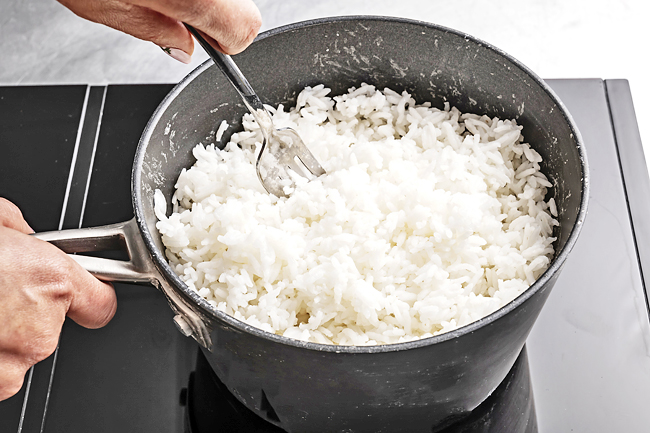Becky Krystal
THE WASHINGTON POST – A pot of rice is one of the most elemental, universal foods, and yet even the most competent home cooks can still struggle to get it right. Yes, I’m raising my hand.
For as many cultures and dishes that feature rice, there are probably about as many opinions on how to make it well. To be clear: Yes, I know you can make rice in a rice cooker or Instant Pot, or what have you. If that’s what you prefer, go for it.
But I agree with cookbook author Andrea Nguyen, who says cooking rice on the stove lets you better observe, tweak and understand how to make this staple. Plus, you can’t beat the simplicity, especially if your kitchen equipment is limited.
To help get over my own rice hang-ups, I spent some time with Nguyen in our Food Lab, going step by step through her recipe for “10-10-10 Perfect Rice” featured in her new book, Ever-Green Vietnamese. Here’s what I learnt:
WHICH TYPE OF RICE IS BEST
Nguyen’s go-to method is designed for long-grain rice, and her preferred variety is jasmine.
“It has this wonderful chew to it and incredible, incredible aroma when it’s cooking,” she said.
If you can, seek out jasmine rice from Thailand, Nguyen advised. Look for grains that are polished and long, without too many that are broken. The grains should be more translucent than chalky.
Nguyen said finding your favourite rice is like picking your favourite brand of jeans, so it’s okay to be choosy and try a few different options before settling on one.

HOW TO WASH RICE – AND WHY TO DO IT
Whether you rinse your rice is a matter of personal preference, Nguyen said, though she says it can help eliminate surface starches and reduce gumminess. That way you get more individual grains that don’t stick together. Rinsing “gives it a much cleaner flavour”, she said.
You don’t necessarily have to set the rice in a strainer or separate bowl and dirty more dishes.
Nguyen recommended putting the rice in your pot (she likes something with a two- to three-quart capacity for cooking two cups of dried rice), covering it by about one inch of water and stirring with your fingers.
Pour off the water – or save to water your plants – and repeat two or three times. The water will be almost, but not crystal, clear.
WATER TO RICE RATIO
Nguyen’s recipe calls for a four-to-five ratio of rice to water (two cups rice to two-and-a-half cups water) to get a “chewy, firm texture” with grains that are not too hard or too soft.
Again, this is the kind of thing that comes down to personal preference, so feel free to experiment to reach your desired texture.
Nguyen offers another clever tip if you want to get out of measuring water every time.
Once you settle on a pot you like for making rice and the amount of water you prefer, pour in the (measured) amount of water.
Then stick your finger in until the tip reaches the surface of the rice and gauge how far up the water goes on your finger.
For any future batches, you’ll know how to eyeball the water without your measuring cup.
COOKING RICE ON A STOVE
As your water comes to a boil, you’ll want to stir occasionally to even out the cooking, since grains toward the bottom of the pot are closer to the heat, Nguyen said.
And it’s okay to do so. Rice is not that delicate. It “can be stirred, prodded or coaxed”, Nguyen said.
Once the water boils, drop the heat a little and simmer for one to three minutes.
Don’t walk away. The rice is expanding and absorbing water, so there will be less and less liquid among the grains.
Look for little sputtering craters to form on the surface.






